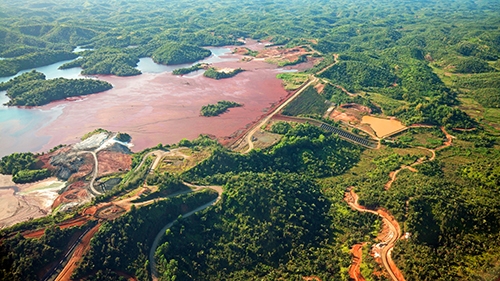In recent years, several tailings dam collapses have highlighted the urgent need to address the safety of these unique structures. Tailings dams are constructed during mining operations to hold tailings, the waste product left after the target material is extracted from the ore. Tailings are typically composed of sand, silt and clay particles that are suspended in a water-based slurry. The fact that tailings may contain chemicals used for mineral extraction makes these failures of particular concern beyond that of a typical dam.
 |
Billions of cubic meters of mine tailings are produced and processed annually. Beyond the chemical dangers when a tailings dam collapse occurs, the breach can lead to a host of other issues including potential fatalities, socio-economic consequences in surrounding communities, business interruption, revenue loss, environmental contamination, and stakeholder and industry reputation.
While tailings dams have evolved in recent years, they remain complex structures to design, construct, operate and maintain within an ever-changing mining environment. It’s critical for mining companies, investors, insurers, communities and other stakeholders to understand the potential failure mechanisms and their root causes. Using this knowledge, we can build redundancy and resilience into tailings storage facilities, ultimately reducing and eliminating catastrophic failures.
Why are Tailings Dams so Challenging to Manage?
Unlike conventional water resource dams which are typically built under one owner, using a fixed design, with one engineer and contractor, tailings dams may start their life as a starter dyke and then grow over time—in some cases over decades – as the mining operations grow. Often, this means a changing climate, environment, regulations, and system needs. Their unique long-life development invites many opportunities for human errors or omissions that impacts the site investigation, dam design and construction, ongoing operation, and ultimate closure. As stated within the Mount Polley Independent Expert Investigation and Review Panel Report on Mount Polley Tailings Storage Facility Breach (30 January 2015) “Tailings dams are complex systems that have evolved over the years. They are also unforgiving systems, in terms of the number of things that have to go right. Their reliability is contingent on consistently flawless execution” from concept to completion.
How is Industry Mitigating the Risk of Future Collapses?
While the Mount Polley tailings dam collapse in 2014 and the Samarco tailings dam failure in 2015 were both wake-up calls in the industry, the Brumundinho collapse in January 2019 in Brazil that resulted in nearly 300 fatalities became the industry defining event. These recent events are added to other recorded historic events dating back only 60 years, which have resulted in the unexpected release of over 200,000,000 m3 of tailings from tailings storage facilities, with over 2,300 reported fatalities. Aside from the tragic loss of life, these and other failures have also resulted in significant environmental, social-economical, reputational and financial losses.
The global mining community along with other stakeholders around the world are accelerating long overdue action in efforts to reduce, if not eliminate, these tailing dam failures. In addition to developing Best Available Technologies (BAT) for Physical Stability (PS) and Chemical Stability (CS), universities, governments, mining organizations, and learned societies are improving upon and enforcing standards to reduce the impact of human errors and omissions, moving “towards zero failure.” The underlying principle for future tailings management involves a performance-based, risk informed safe construction, operation, and closure approach that is centered on accountability. This is achieved by multiple layers of review, recurrent risk assessment, and performance-based validation from construction through closure in an effort to reduce human error and achieve sustainability. We’re at the forefront of helping the global mining community understand the inherent risks of tailings dams, how they fail and what can be done to mitigate the risk of collapse in the future.
Best practice for deposition of tailings? Dry stacker? Slurry tailings? Paste Tailings?